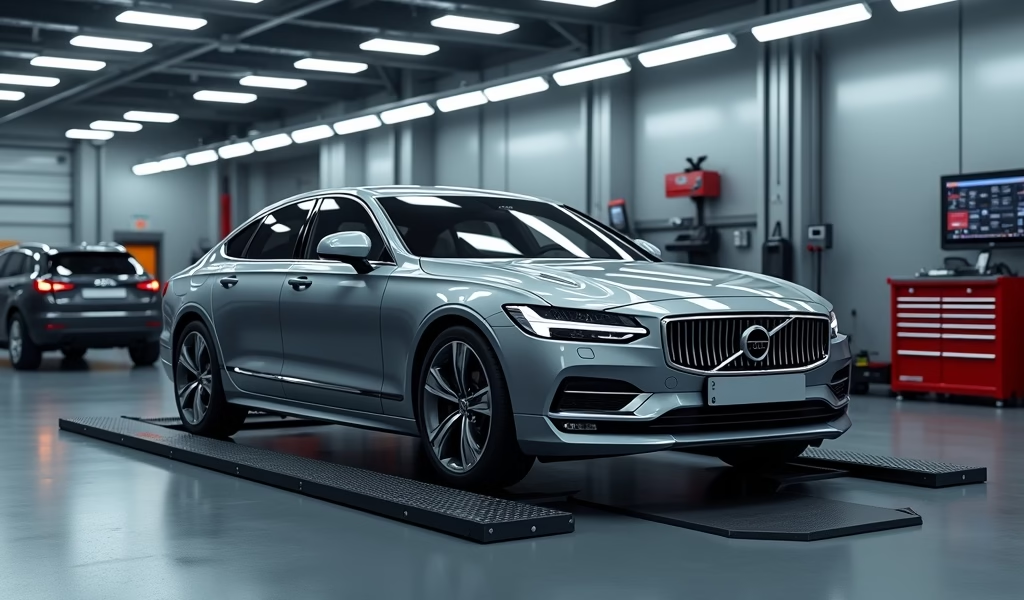Overview
This article provides five essential tips for leveraging car dealership reviews when purchasing a vehicle: research across multiple platforms, look beyond star ratings, identify patterns in feedback, evaluate dealer responses, and contribute your own honest reviews. It emphasizes that thoughtful analysis of reviews can reveal a dealership’s true character and help consumers avoid problematic businesses while finding dealers committed to customer satisfaction.
Table of Contents
- Understanding Car Dealership Reviews
- Why Car Dealership Reviews Matter
- Tip 1: Research Reviews Across Multiple Platforms
- Tip 2: Look Beyond Star Ratings
- Tip 3: Identify Patterns in Customer Feedback
- Tip 4: Evaluate Dealer Responses
- Tip 5: Contribute With Your Own Honest Reviews
- Conclusion
- Frequently Asked Questions
Understanding Car Dealership Reviews
Car dealership reviews have become an essential tool in the modern car buying process. As someone who’s spent 20 years under the hood and guiding folks through vehicle purchases, I can tell you these online testimonials are worth their weight in gold. They offer genuine insights into how dealerships treat customers, handle negotiations, and provide service after the sale.
When approaching car dealership reviews, think of them as conversations with previous customers rather than just ratings. Each review tells a story about someone’s experience, highlighting what went well and what didn’t. This information can save you from headaches, unexpected costs, and disappointment down the road.
Today’s car buyers are savvier than ever, with about 95% researching online before ever setting foot on a dealership lot. Reviews have become the digital word-of-mouth that helps separate reputable dealers from those you might want to avoid. Let’s explore how to make these reviews work for you when searching for the best place to buy a used car.
Why Car Dealership Reviews Matter
Car dealership reviews matter because they provide transparent insights into the customer experience. Unlike the polished promises on dealership websites, reviews offer unfiltered perspectives from real buyers who’ve already gone through what you’re about to experience.
Reviews act as a reality check in an industry that sometimes struggles with trust issues. According to DealerRater consumer research, 70% of car shoppers are more likely to buy from a dealership with positive reviews. That’s a significant number that demonstrates the power of social proof in the car-buying journey.
Beyond informing your decision about where to shop, car dealership reviews can also give you leverage during negotiations. If you notice multiple reviews mentioning successful price negotiations or special accommodations, you might be able to request similar treatment by referencing those positive experiences.
Reviews also benefit the industry as a whole. Dealerships that consistently receive negative feedback are forced to improve or risk losing business to competitors with better reputations. This creates a healthier marketplace where customer service excellence becomes a priority, not an afterthought.

Tip 1: Research Reviews Across Multiple Platforms
When diving into car dealership reviews, don’t limit yourself to just one source. Different platforms attract different types of reviewers, and seeing the complete picture requires checking multiple sites. Cast a wide net to gather the most comprehensive view of a dealership’s reputation.
Start with these essential review platforms:
- Google Reviews – Often has the highest volume of reviews and represents a broad customer base
- Yelp – Tends to attract more detail-oriented reviewers who provide comprehensive experiences
- DealerRater – Specializes in automotive dealership reviews with specific categories for evaluation
- Cars.com – Combines vehicle and dealership reviews in one platform
- Better Business Bureau (BBB) – Focuses on complaint resolution and business practices
- Facebook – Often contains more personal and community-based perspectives
Each platform has its own flavor and reviewer demographic. For instance, BBB reviews often highlight serious complaints and resolution attempts, while Google reviews typically offer a broader spectrum of experiences. By comparing feedback across platforms, you’ll start to see patterns emerge.
Remember to check the dealership’s responses across these platforms too. How they handle criticism online often reflects how they’ll handle issues when you’re their customer. Dealerships that respond thoughtfully to negative reviews demonstrate accountability and customer care.
Don’t forget to explore social media channels as well. Many customers share their experiences through tweets, Facebook posts, or even video testimonials on YouTube. These unfiltered accounts can provide valuable insights that more structured review platforms might miss, especially when looking for the best way to buy a used car.
Tip 2: Look Beyond Star Ratings
Star ratings offer a quick snapshot of a dealership’s performance, but they rarely tell the complete story. A 4.5-star dealership might still have significant issues in areas that matter most to you, while a 3.8-star dealer could excel in providing exactly what you need. The devil, as they say, is in the details.
When examining car dealership reviews, take time to actually read the content of reviews, not just skim the ratings. Look for specific mentions of:
- Sales process transparency
- Negotiation experiences
- Finance department practices
- Vehicle preparation quality
- Post-sale follow-up and support
- Service department efficiency
According to J.D. Power research, customers who report high satisfaction specifically mention personalized attention and transparent pricing most frequently. These elements may be more important than amenities like free coffee or fancy waiting rooms that might also influence ratings.
Pay special attention to reviews from customers who purchased similar vehicles to what you’re considering. Their experiences will likely be most relevant to your situation. For example, luxury brand dealerships might treat premium vehicle buyers differently than those shopping for entry-level models.
Also, consider the date of reviews. Dealerships change management, staff, and policies over time. A flood of negative reviews from two years ago followed by recent positive feedback might indicate significant improvements. Conversely, a decline in ratings could signal deteriorating service quality.
Remember that extreme opinions tend to motivate people to write reviews. Look for thoughtful, balanced assessments that acknowledge both strengths and weaknesses to gain the most accurate picture of what to expect.
Tip 3: Identify Patterns in Customer Feedback
Individual reviews can be influenced by personal factors, unusual circumstances, or even simple misunderstandings. The real value comes from identifying consistent patterns across multiple car dealership reviews. These patterns reveal systematic strengths or weaknesses that you’re likely to encounter yourself.
When analyzing reviews, look for recurring mentions of:
- Pressure sales tactics or a relaxed, no-pressure environment
- Hidden fees appearing at closing or transparent pricing throughout
- Knowledgeable, helpful staff or uninformed, dismissive employees
- Warranty or service issues being resolved promptly or prolonged problems
- Clean, well-maintained vehicles or poorly prepared inventory
- Efficient paperwork processes or lengthy, confusing transactions
If you spot the same complaint across ten different reviews from different time periods, it’s likely a persistent issue rather than an isolated incident. Similarly, consistently praised aspects probably represent genuine dealership strengths.
Pay particular attention to how the dealership handles financing. According to the Federal Trade Commission, financing complaints are among the most common consumer issues with car dealerships. Multiple mentions of “bait and switch” financing tactics or unexplained fee additions are serious red flags.
Another pattern worth noting is how different departments within the dealership perform. Some dealers have excellent sales teams but problematic service departments, or vice versa. Understanding these internal variations helps you know what to expect throughout your ownership experience, not just during the purchase.
Don’t dismiss older patterns just because they’re not recent. Some issues are deeply ingrained in a dealership’s culture and business model, persisting despite personnel changes. If a dealership has historically struggled with honoring warranties, for instance, proceed with caution even if recent reviews are more positive.
Tip 4: Evaluate Dealer Responses
How a dealership responds to reviews—particularly negative ones—reveals volumes about their customer service philosophy and problem-solving approach. In my years working with dealerships, I’ve found that response quality often correlates directly with the experience you’ll have if problems arise during your purchase or ownership.
When examining car dealership reviews, pay close attention to:
- Response rate: Do they respond to most reviews or only select ones?
- Response time: How quickly do they address customer concerns?
- Personalization: Are responses tailored to specific issues or generic templates?
- Tone: Do responses sound defensive or genuinely concerned?
- Solution orientation: Do they offer specific solutions or just vague apologies?
- Follow-up invitations: Do they encourage dissatisfied customers to contact management directly?
Dealerships that respond thoughtfully to criticism typically demonstrate the same care in their face-to-face interactions. Look for responses that acknowledge specific concerns rather than dismissing them. Phrases like “We’re reviewing our procedures” or “We’d like to make this right” indicate a willingness to improve.
Be wary of defensive responses that blame customers or make excuses. Comments like “You didn’t understand our policy” or “No one else has complained about this” suggest an unwillingness to accept feedback—a trait that often extends to in-person customer service.
Also valuable are responses that invite offline resolution. When a dealer comments, “Please contact our general manager directly at [phone number],” they’re showing a commitment to addressing issues personally rather than just managing their online reputation. This approach typically indicates a car place that values customer satisfaction beyond mere public appearances.
Remember that some dealerships hire third-party reputation management companies to handle their online presence. The most authentic responses come from actual dealership personnel who identify themselves by name and position, showing accountability and personal investment in customer satisfaction.

Tip 5: Contribute With Your Own Honest Reviews
After benefiting from others’ car dealership reviews, pay it forward by contributing your own experiences. Thoughtful, balanced reviews help fellow consumers make informed decisions and encourage dealerships to maintain high standards. Your feedback matters more than you might realize.
To write a truly helpful dealership review:
- Be specific about your experience with names, dates, and relevant details
- Mention both positive aspects and areas for improvement
- Focus on facts rather than emotional reactions
- Include information about the vehicle purchased and any unique circumstances
- Describe how problems were resolved (or not)
- Rate different aspects separately (sales, financing, service, etc.)
The most valuable reviews provide context that helps readers determine if your experience applies to their situation. For example, “As a first-time buyer with limited credit history, I appreciated how the finance manager explained my options without pressuring me toward the most expensive choice.”
Timing matters when writing reviews. Consider submitting an initial review shortly after purchase, then following up after several months to update on the post-sale experience. This two-stage approach provides a more complete picture of the dealership’s performance throughout the customer relationship.
If you experienced problems that were later resolved satisfactorily, acknowledge both the issue and the resolution. This balanced approach is particularly helpful to other consumers who want to understand how the dealership handles inevitable complications.
Remember that your review may be read by dealership employees whose livelihoods depend on their reputation. Constructive criticism is more likely to inspire improvement than harsh condemnation. When possible, praise specific employees by name who provided exceptional service—this recognition encourages positive behaviors throughout the organization.
Conclusion
Car dealership reviews have transformed from casual recommendations into essential tools for the informed buyer. By researching across multiple platforms, looking beyond star ratings, identifying patterns, evaluating dealer responses, and contributing your own experiences, you can navigate the car-buying process with confidence and clarity.
Remember that no dealership is perfect, but the right one for you will demonstrate transparency, responsiveness, and a genuine commitment to customer satisfaction. Use reviews as a guide, but trust your personal interactions as well—sometimes the dealership that looks perfect on paper might not feel right in person, and vice versa.
The time invested in researching car dealership reviews pays dividends throughout your ownership experience. A few hours spent reading about others’ experiences can save you years of frustration with the wrong dealer or lead you to a relationship with a business that truly values your satisfaction.
As you embark on your car-buying journey, approach dealership reviews as conversations with fellow consumers who’ve walked the path before you. Their collective wisdom, combined with your own research and instincts, will help ensure that your next vehicle purchase is not just satisfactory but truly exceptional. And when the process is complete, don’t forget to share your story—the next person reading reviews might be making an even bigger purchase decision than you.
Frequently Asked Questions
How many reviews should I read before visiting a dealership?
Aim to read at least 15-20 reviews spread across different platforms for a balanced perspective. Focus on reviews from the past 6-12 months to ensure you’re getting current information about the dealership.
Are verified purchase reviews more reliable than unverified ones?
Verified purchase reviews typically offer more credibility as they come from confirmed customers. However, unverified reviews can still provide valuable insights, especially when they contain specific details that suggest authentic experiences.
How should I interpret extremely negative reviews?
Look for specific details and whether the dealership attempted resolution. Isolated extremely negative reviews may represent outlier experiences, but multiple similar complaints likely indicate systematic issues.
Do dealerships remove negative reviews?
Reputable review platforms don’t allow businesses to remove negative reviews, though they may flag inappropriate content. If you only see glowing reviews on a dealership’s website, check independent platforms for a more complete picture.
Should I mention reviews during negotiations at a dealership?
Tactfully referencing positive reviews can establish rapport, while mentioning concerning patterns can demonstrate you’re an informed consumer. Focus on specific aspects rather than using reviews as leverage to demand special treatment.

